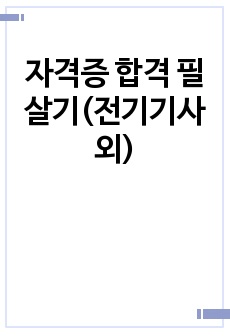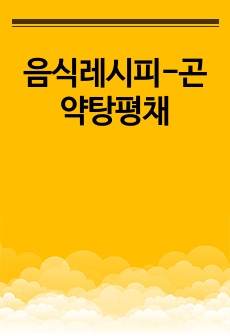DESIGN STRATEGIES IN A TRANSITIONAL ECONOMY: THE CASE OF CHINESE UNDERWEAR ENTERPRISE AIMER GROUP, LTD.
* 본 문서는 배포용으로 복사 및 편집이 불가합니다.
서지정보
ㆍ발행기관 : 글로벌지식마케팅경영학회(GFMC)
ㆍ수록지정보 : Global Marketing Conference
ㆍ저자명 : Hong Yu, Ping Zhao, Jingjing Xia
ㆍ저자명 : Hong Yu, Ping Zhao, Jingjing Xia
영어 초록
Introduction Over the past 30 years, Chinese textile and clothing manufacturers have successfully established themselves as leading original equipment manufacturers (OEMs) for world markets. This reputable position requires dedicated cost management; however, incremental increases in labor, land prices, rent, and production costs in China threaten and may eventually eliminate their OEM advantage (Yam, Lo, Sun, & Tang, 2003). The worldwide economic and business recession has intensified cost cutting measures as the essential survival tool for maintaining competitiveness. Since the mid-1990s, many Chinese companies have begun to recognize the importance of developing their own global brands and moving up the value-creation ladder (Fan, 2006). One such company is Aimer Group, Ltd., a vertically integrated premium underwear manufacturer. Initially founded in 1993 as an OEM, Aimer quickly transitioned to establish its own brands in domestic markets and, in recent years, has ventured into international markets. Currently, Aimer and its umbrella product lines are among the most recognized underwear brands in China with a manufacturing capacity of 10 million pieces. Their merchandise includes an array of women’s, men’s, teen girl’s and children’s lines as well as custom-made lingerie. According to the Chinese General Chamber of Commerce, Aimer Group has maintained the highest market share and the largest sales volume in the underwear sector for several years in China’s markets (Aimer, 2011). Objectives The purpose of the study was to investigate the design strategies implemented by Aimer to support their successful branding efforts. Specifically, the researchers seek to find: (a) the core elements in Aimer’s design strategies; (b) Aimer designers’ approach to product development; and (c) How design strategies support Aimer’s overall branding and marketing strategies. Findings will provide valuable implications for other Chinese apparel manufacturers who strive to integrate design innovation in order to remain competitive. Research Method A case study method was implemented which included: on-site visits to Aimer Group’s headquarters, manufacturing facility, and retail stores in Beijing; in-depth interviews with Aimer Groups’ Chairman, senior management, Chief Design Officer, designers, retail store managers, and the general manger of the Beijing manufacturing facility; and a review of the company website and other internal documents, as well as an extensive external search of relevant news reports, social media contents, industry information, and academic literature. A qualitative data analysis method was utilized. Findings Aimer brands have grown and matured along with the Chinese consumers. Until the late 1990s, consumers passively accepted whatever the industry provided for them. Today, 15 years later, consumers have become keenly aware of what they want in underwear and that desire drives the industry’s new product development. Aimer’s design strategies are consumer-centric but also a reflection of its internal strategic direction. Its core elements include the following: (1) Understanding consumer lifestyles: Extensive fashion industry trend analysis, consumer research, and market/sale feedback are just starting points for product development at Aimer. In addition, they use broader consumer lifestyle analysis, including an examination of new technology trends, consumer preferences for jewelry, cosmetics, car and cell phone designs, popular video/computer games, consumers’ financial management behaviors, and societal hot topics as a way of guiding product design. (2) Innovation: Innovation is of paramount importance in Aimer’s product development. They have maintained active partnerships with international suppliers and Research & Development teams to ensure the latest fiber discoveries, fabric developments, and pattern engineering technology are incorporated into new product design. (3) Tradition preserved and reinvented: Aimer brands keep certain essential elements integral to their overall style, reinventing and integrating heritage elements into new designs. By doing so, brand history is enriched and continuity sustained. Aspers (2010) suggests that product development must embrace contextual knowledge: the designer’s general knowledge of fashion and their lifeworld. Each domain is used to interpret fashion. A designer’s lifeworld comprises their inherent values and beliefs, presenting challenges when creating products for consumers who live in different lifeworld. Aimer’s solutions to the challenge include the following: (1) Designers as entrepreneurs: Designers are trained to be entrepreneurs who must think of design not only from creative aspects but also within a business context. The company has established effective protocols for new product design and adoption procedures and standards; meanwhile, designers are provided with weekly sales records as market feedback to guide their future design directions. They are also given opportunities on a regular basis to travel to various international and domestic markets to gain first-hand experience and knowledge of fashion trends and consumers. (2) Teamwork: Designers from various regions of China and internationally are grouped in teams and assigned to work together on brands. This provides ample opportunity for them to interact and learn from each other so that their lifeworld is expanded. Branding literature suggests that consumer’s individual and shared brand experiences affect a consumer-brand relationship (Chang, Long, Chieng, & Hua, 2006) which is of critical importance to brand loyalty. Aimer’s design strategies support its branding and marketing strategies by: (a) contributing to consumers’ positive, consistent, and multi-dimensional brand knowledge as a part of the brand-leveraging process (Keller, 2003); (b) providing value-added product and service features to enhance brand-augmentation (Magrath, 1997); and (c) offering strong and effective design capacity for brand tiering (Magrath, 1997). Implications Based on the findings, implications for Chinese apparel manufacturers who strive to upgrade with design innovation will be discussed.참고 자료
없음"Global Marketing Conference"의 다른 논문
 THE ROLES OF GREEN PACKAGING IN UGLY FOOD PURCHASE INTE..22페이지
THE ROLES OF GREEN PACKAGING IN UGLY FOOD PURCHASE INTE..22페이지 THE IMPACT OF INDUCED AWE ON ETHICAL TOURIST BEHAVIORS5페이지
THE IMPACT OF INDUCED AWE ON ETHICAL TOURIST BEHAVIORS5페이지 A BIBLIOMETRIC ANALYSIS OF SPIRITUAL TOURISM RESEARCH15페이지
A BIBLIOMETRIC ANALYSIS OF SPIRITUAL TOURISM RESEARCH15페이지 SOCIAL NETWORK ANALYSIS AND RESPONSE TIME TESTING: CONS..11페이지
SOCIAL NETWORK ANALYSIS AND RESPONSE TIME TESTING: CONS..11페이지 THE EFFECTS OF PARA-SOCIAL INTERACTION ON ONLINE CELEBR..3페이지
THE EFFECTS OF PARA-SOCIAL INTERACTION ON ONLINE CELEBR..3페이지 THE INFLUENCE OF OPINION LEADERS ON DAILY DEALS USER’S ..3페이지
THE INFLUENCE OF OPINION LEADERS ON DAILY DEALS USER’S ..3페이지 HOW IMMERSIVE RETAILING AFFECTS CONSUMERS’ URGE TO BUY:..6페이지
HOW IMMERSIVE RETAILING AFFECTS CONSUMERS’ URGE TO BUY:..6페이지 KEY TO SUPERSTARDOM IN A GLOBALISED MARKET: THE ROLE OF..6페이지
KEY TO SUPERSTARDOM IN A GLOBALISED MARKET: THE ROLE OF..6페이지 A POST-PANDEMIC LOOK AT TOURISTS’ PERCEIVED COOLNESS OF..4페이지
A POST-PANDEMIC LOOK AT TOURISTS’ PERCEIVED COOLNESS OF..4페이지 EXTRACTING OFFLINE RETAIL SHOPPING PATTERNS: OLLABORATI..5페이지
EXTRACTING OFFLINE RETAIL SHOPPING PATTERNS: OLLABORATI..5페이지


















